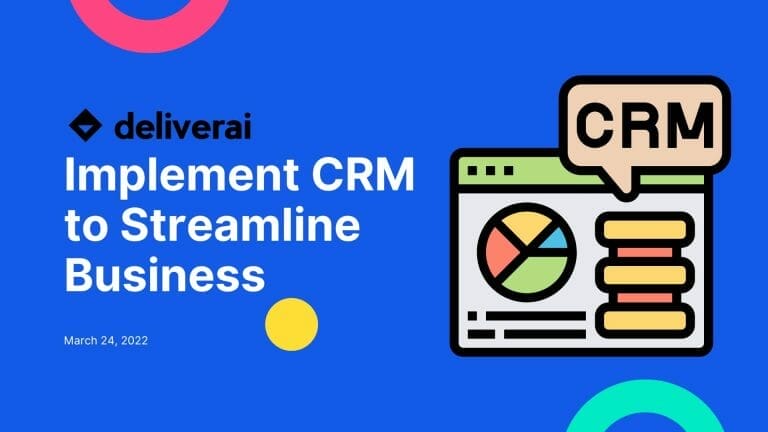Struggling to gauge the effectiveness of your CRM strategy? Want to maximize your CRM system’s potential? This article will help you unlock CRM success by providing essential CRM metrics.
By setting measurable goals using the SMART framework and assigning key performance indicators (KPIs), you can determine if your CRM strategy is effective.
We’ll cover a range of CRM metrics in sales, marketing, and customer service, including close rate, upsell rate, net-new revenue, and customer satisfaction.
Additionally, we’ll discuss the importance of running the right CRM reports to analyze key CRM metrics and make data-driven decisions.
With these insights, you can enhance collaboration, align teams, and fully unlock your CRM system’s potential.
Key Takeaways
- Set measurable CRM goals using SMART criteria and assign KPIs to track the effectiveness of your CRM strategy.
- Measure sales metrics such as close rate, average deal size, upsell rate, and net-new revenue to evaluate sales success and identify areas for improvement.
- Utilize marketing metrics including revenue generated by campaigns, email list growth rate, NPS, and churn rate to measure marketing effectiveness and customer satisfaction.
- Monitor customer service metrics like average number of follow-ups per ticket, CLV, CAC, NPS, and average time to resolution to assess customer support efficiency and identify opportunities for improvement.
Set Measurable CRM Goals
To set measurable CRM goals, you need to clearly define your objectives and assign key performance indicators (KPIs) to track your progress. This involves using CRM goal setting techniques and measuring CRM success through KPIs.
By setting specific, measurable, achievable, relevant, and timely goals (SMART goals), you can ensure that your CRM strategy is effective. Assigning KPIs to each goal allows you to track and analyze the success of your CRM efforts.
Some examples of CRM metrics to track include close rate, upsell rate, net-new revenue, length of sales pipeline stage, and length of sales cycle. By measuring these metrics before and after implementing CRM, you can determine if your strategy is working and make data-driven decisions to optimize your CRM strategy.
Assign KPIs to Each Goal
Assigning key performance indicators (KPIs) to each goal is crucial for measuring and tracking the success of your CRM strategy. Tracking performance and selecting the right KPIs will provide valuable insights into the effectiveness of your CRM efforts.
By assigning specific metrics to each goal, you can measure progress, identify areas for improvement, and make data-driven decisions to optimize your CRM strategy.
When selecting KPIs, consider the goals you have set for your CRM implementation and choose metrics that align with those objectives. Whether it’s tracking close rates, upsell rates, net-new revenue, or the length of sales pipeline stages, each KPI should be directly tied to a specific goal and provide meaningful information about the performance of your CRM strategy.
Measure CRM Effectiveness With Before and After Comparison
Compare the goals you set before implementing CRM with the results after to measure the effectiveness of your CRM strategy.
This CRM effectiveness measurement, also known as CRM impact analysis, is crucial for evaluating the success of your CRM implementation.
By comparing the goals you initially set with the actual outcomes achieved, you can determine whether your CRM strategy has been effective in achieving those goals.
Key CRM metrics to consider include close rate, upsell rate, net-new revenue, length of sales pipeline stage, and length of sales cycle.
Sales Metrics
Now let’s delve into the sales CRM metrics to further analyze the impact of your CRM strategy. Improving conversion rates and analyzing deal velocity are crucial for measuring the success of your sales efforts. Take a look at the table below to understand the key sales CRM metrics you should track:
| Sales Metrics | Description | Importance |
|---|---|---|
| Close Rate | Number of closed deals compared to leads in the pipeline | Measures sales success |
| Average Deal Size | The average value of closed deals | Indicates sales performance |
| Upsell Rate | Percentage of customers buying more than originally planned | Measures customer satisfaction and loyalty |
| Length of Sales | Time spent in each stage of the sales pipeline | Identifies bottlenecks and sales process |
| Net-New Revenue | Spending from new customers | Reflects sales growth |
| Length of Sales Pipeline Stage | Time spent in each stage of the sales pipeline | Identifies bottlenecks and |
Marketing CRM Metrics
To measure the effectiveness of your CRM strategy in marketing, track key metrics that assess the impact of your campaigns and customer satisfaction.
Measuring campaign effectiveness is crucial in understanding the success of your marketing efforts. By analyzing the revenue generated by each campaign, you can determine which strategies are driving sales and allocate resources accordingly.
Another important metric is the email list growth rate, which allows you to track the growth of your subscriber base. By improving email marketing strategies, such as segmenting and personalizing campaigns, you can increase the rate at which your email list grows.
Additionally, monitoring the net promoter score (NPS) can help measure customer satisfaction and loyalty. By implementing CRM systems, you can automate NPS surveys and track and report NPS scores over time, allowing you to continuously improve customer satisfaction.
Customer Service Metrics
Measure the efficiency and effectiveness of your customer service with key metrics. By tracking customer satisfaction metrics and improving customer support efficiency, you can ensure that your customer service department is delivering the highest level of service to your customers. Below is a table outlining the important customer service CRM metrics to monitor:
| Metric | Definition | Importance |
|---|---|---|
| Average number of follow-ups per ticket | The average number of interactions required to resolve a customer issue | Indicates the workload and efficiency of your support team |
| Customer lifetime value (CLV) | The predicted revenue a customer will generate during their lifetime as a customer | Measures the value of your customer base |
| Customer acquisition cost (CAC) | The cost incurred to acquire each new customer | Evaluates the effectiveness of your customer acquisition strategy |
| Net promoter score (NPS) | Measures customer satisfaction and loyalty based on their likelihood to recommend your business | Reflects the overall customer experience |
| Average time to resolution | The average time it takes to resolve a customer issue | Indicates the efficiency of your support team |
Run the Right CRM Reports
Start by running the CRM reports that align with your specific goals and needs. Customizing your CRM reports is essential for accurate analysis and measurement of success. These reports provide valuable insights into key metrics such as close rate, upsell rate, net-new revenue, length of sales pipeline stage, and length of sales cycle.
Regularly reviewing and analyzing these reports allows you to identify trends and areas for improvement in your CRM strategy. By making data-driven decisions based on CRM report analysis, you can optimize your CRM strategy for better results.
Sharing these reports with relevant teams and stakeholders promotes collaboration and alignment. Remember, effective CRM report customization and analysis are crucial for unlocking CRM success.
Close Rate
To gauge the effectiveness of your CRM strategy, it’s essential to closely monitor your close rate.
The close rate is a key sales metric that measures the number of closed deals compared to the number of leads in your pipeline.
By measuring your close rate, you can assess your sales team’s efficiency and the quality of your leads.
A high close rate indicates that your sales team is effectively converting leads into customers, while a low close rate may indicate productivity or lead quality issues.
By consistently tracking and analyzing your close rate, you can identify areas for improvement and make data-driven decisions to optimize your CRM strategy.
Improving your close rate can lead to increased revenue and customer satisfaction, making it a crucial metric to measure.
Upsell Rate
Increase your upsell rate by leveraging your CRM strategy. Upsell rate measures how many customers buy more than originally planned, and it’s a key metric for assessing CRM effectiveness.
By implementing effective tactics for increasing net new revenue, you can boost your upsell rate and drive additional sales.
One CRM strategy for improving upsell rates is to utilize customer data to identify potential upsell opportunities. By analyzing purchase history, browsing behavior, and customer preferences, you can predict which leads are likely to upgrade or buy additional products. This allows you to target these customers with personalized offers and recommendations, increasing the likelihood of an upsell.
Additionally, providing exceptional customer service and nurturing customer relationships can also lead to higher upsell rates. By building trust and consistently delivering value, customers are more inclined to purchase additional products or services.
Leveraging your CRM solution to track and measure your upsell rate is crucial for understanding the effectiveness of your upselling efforts and identifying areas for improvement.
Net-New Revenue
Boost your net-new revenue by leveraging your CRM strategy. Net-new revenue measures the spending from new customers and is a key metric for assessing the effectiveness of your CRM efforts. By implementing effective tactics for improving net-new revenue, you can increase your overall revenue and attract valuable customers.
One strategy for increasing net-new revenue is to identify high-value deals using CRM data. By analyzing customer behavior and preferences, you can target potential customers who are more likely to make larger purchases. Another tactic is to optimize your sales process using CRM automation and streamlining. By reducing the length of the sales cycle and improving sales productivity, you can increase your net-new revenue.
To paint a clearer picture, here is a table highlighting some CRM strategies for increasing net-new revenue:
| CRM Strategies for Increasing Net-New Revenue | Effective Tactics for Improving Net-New Revenue |
|---|---|
| Identify high-value deals | Analyze customer behavior and preferences |
| Optimize sales process | Automate and streamline sales processes |
| Reduce the length of the sales cycle | |
| Improve sales productivity |
Length of Each Sales Pipeline Stage
By analyzing the length of each sales pipeline stage, you can identify bottlenecks and areas for improvement in your sales process. This data-driven approach allows you to optimize your sales pipeline and improve sales efficiency.
Tracking the time it takes for leads to progress through each stage gives you valuable insights into potential roadblocks and areas where deals may be stalling. By understanding these bottlenecks, you can take steps to streamline and automate your sales process, ensuring that deals move faster through the pipeline.
This not only increases productivity but also improves the overall customer experience. By continuously monitoring and analyzing the length of each sales pipeline stage, you can make data-driven decisions that optimize your CRM strategy and drive greater success.
Length of Sales Cycle
Measure how long it takes for your deals to close by monitoring the length of your sales cycle. The length of the sales cycle is a crucial metric that can provide valuable insights into the efficiency of your sales process. By analyzing this metric, you can identify areas where the sales cycle is longer than desired and take steps to optimize the process.
Shortening the sales cycle can lead to increased productivity and revenue. Utilize CRM software to automate and streamline processes, enabling faster deal closures. Factors such as decision-makers and price can affect the length of the sales cycle, so it’s important to continuously monitor and measure this metric to ensure CRM success and drive business growth.
Conclusion
As you unlock the full potential of your CRM system, you’ll witness the transformation of your business. By setting measurable goals and tracking essential CRM metrics, you can optimize your CRM strategy and drive success.
The power of data-driven decisions and analysis will enable you to enhance collaboration, align your teams, and ultimately elevate customer satisfaction.
Embrace the symbolism of unlocking doors and open the pathway to CRM success.







